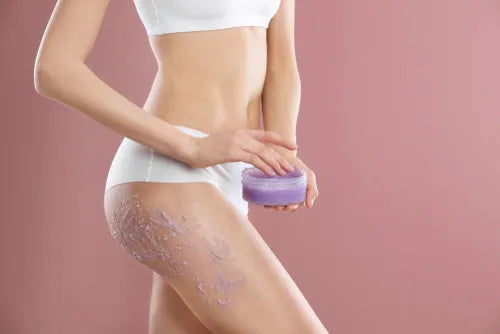
The Dangers of Over-Exfoliating
As we step into the New Year with fresh resolutions and renewed commitments to self-care, skincare often tops the list. Exfoliation, a cornerstone of any effective skincare routine, is a powerful tool to achieve glowing, smooth skin. However, the pursuit of radiant skin can sometimes lead to over-exfoliation—a common mistake that can cause more harm than good. Let’s dive into the problems caused by over-exfoliating, how to recognize the signs, and how to strike the right balance for healthy, luminous skin.
What Happens When You Over-Exfoliate?

Exfoliation removes dead skin cells from the surface, revealing fresh skin beneath. While this process can improve texture, promote cell turnover, and enhance the absorption of other products, over-exfoliation disrupts your skin’s natural barrier. Here’s what can happen:
Increased Sensitivity: Redness, stinging, and heightened reactivity to skincare products are common symptoms.
Dehydration and Dryness: Without its natural barrier, skin loses moisture more quickly, leading to dryness and flaky patches.
Breakouts: Ironically, over-exfoliating can trigger breakouts as your skin tries to compensate for the loss of its protective barrier by overproducing oil.
Premature Aging: Constantly disrupting the skin’s renewal process can lead to inflammation and accelerate the formation of fine lines and wrinkles.
How to Recognize Over-Exfoliation

If you’ve noticed any of the following signs, it’s time to reassess your routine:
A shiny, overly taut appearance
Flaky, peeling skin
Unexplained breakouts or sensitivity to products you previously tolerated
The Golden Rules of Exfoliation

To avoid these pitfalls, follow these best practices for exfoliation:
Know Your Skin Type:
Oily or Combination Skin: You may tolerate exfoliating 2-3 times per week, but monitor your skin’s reaction.
Normal Skin: Stick to 1-2 times per week unless your skin shows signs of dullness or buildup.
Choose the Right Exfoliator:

Chemical Exfoliators: Alpha Hydroxy Acids (AHAs) and Beta Hydroxy Acids (BHAs) work by dissolving bonds between dead cells. These are often gentler and more effective for most skin types.
Time It Right: Exfoliate in the evening so your skin can recover overnight. Always follow with a hydrating serum or moisturizer to replenish lost moisture.
Don’t Forget Sunscreen: Exfoliation makes your skin more sensitive to UV rays. Daily SPF 30 or higher is non-negotiable.
Tools and Products for the Perfect Exfoliation Routine
Here’s a guide to choosing the best tools and products for your face and body:
Face
BHAs (e.g., salicylic acid) for oily or acne-prone skin.

Exfoliating Tools:
Dry brushes help stimulate circulation while sloughing off dead skin.
Exfoliating gloves or loofahs can be effective but should be sanitized regularly to avoid bacteria buildup.
The Best Exfoliating Routine for 2025
Weekly Face Routine

Weekly Body Routine

How to Recover from Over-Exfoliation

If you’ve already overdone it, don’t worry—your skin can bounce back with the right care:
Looking Ahead: Skincare Trends for 2025
As we embrace the New Year, skincare trends are leaning toward minimalist, skin-friendly routines that prioritize barrier health. Ingredients like ceramides, probiotics, and peptides are taking center stage, complementing exfoliation to support overall skin health.
When it comes to exfoliation, less is more. Think of it as a way to enhance your natural beauty, not as a quick fix. By being mindful of your routine and choosing products that respect your skin’s unique needs, you can enjoy a year of healthy, glowing skin—without the risks of over-exfoliation.
